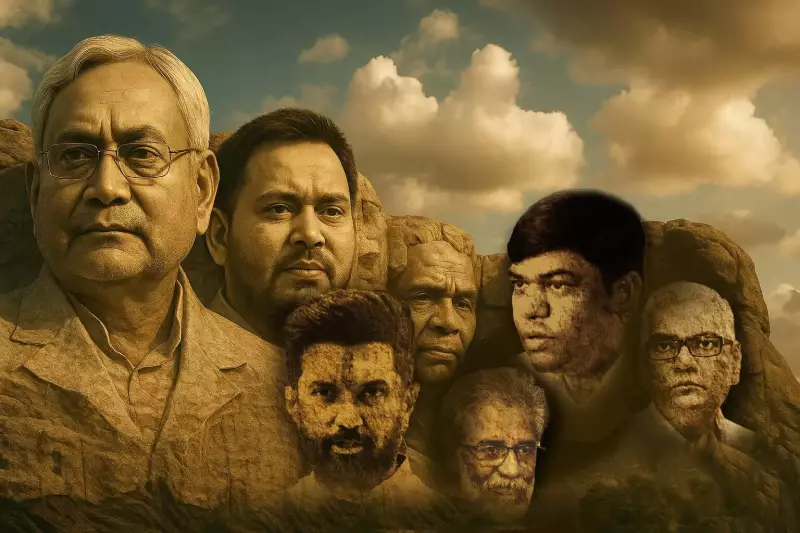
Bihar stands at a crucial political crossroads as the state prepares for the second and final phase of assembly elections on Tuesday, November 11. This decisive round will determine the electoral fate of both the ruling National Democratic Alliance (NDA) and the opposition INDIA bloc in a high-stakes battle for power.
Massive Electoral Exercise Underway
The electoral future of 1,302 candidates, including more than half a dozen ministers in Chief Minister Nitish Kumar's government, rests in the hands of 3.7 crore eligible voters across 122 constituencies. Security has been significantly enhanced with over four lakh personnel deployed statewide to ensure peaceful polling. Bomb disposal squads and paramilitary forces remain on high alert, with senior officials instructed to personally supervise arrangements on election day.
Key Regions and Political Battlegrounds
The final voting phase spans several northern and eastern districts bordering Nepal, including West Champaran, East Champaran, Sitamarhi, Madhubani, Supaul, Araria, and Kishanganj. Political analysts are closely monitoring the Seemanchal belt, covering Araria, Kishanganj, and Supaul, known for its complex religious and caste dynamics. This region could significantly influence the final outcome given its substantial Muslim population.
The Champaran region presents another critical test for the BJP's support among traditional upper-caste and Other Backward Classes voters. The NDA has accused opposition parties of protecting infiltrators, while the INDIA bloc relies heavily on minority support, making Seemanchal votes potentially decisive in determining which alliance emerges victorious.
Prominent Candidates and Political Dynamics
Among the notable contenders is Bijendra Prasad Yadav, a veteran JD(U) leader and the state's senior-most cabinet member, who aims to retain his Supaul seat for an unprecedented eighth term. His BJP colleague Prem Kumar, contesting from Gaya Town, also seeks an eighth consecutive victory since 1990.
Other ministers in the fray include Renu Devi (Bettiah), Neeraj Kumar Singh "Bablu" (Chhatapur), Leshi Singh (Dhamdaha), Sheela Mandal (Phulparas), and Zama Khan (Chainpur). Former deputy chief minister Tarkishore Prasad of the BJP will test his strength in Katihar, aiming for a fifth straight term.
For smaller NDA partners like Jitan Ram Manjhi's Hindustani Awam Morcha (HAM) and Upendra Kushwaha's Rashtriya Lok Morcha (RLM), this phase serves as a crucial litmus test. HAM contests six seats, including Imamganj held by Manjhi's daughter-in-law Dipa, while RLM has fielded Kushwaha's wife Snehlata in Sasaram and Madhaw Anand in Madhubani, both making their political debut.
On the opposition front, Congress state president Rajesh Kumar defends Kutumba, while CPI(ML)'s Mehboob Alam (Balrampur) and Congress's Shakeel Ahmad Khan (Kadwa) aim for hat-trick wins. A notable newcomer is Chanakya Prakash Ranjan, son of JD(U) MP Giridhari Yadav, who defected to the RJD and is contesting Belhar, creating interest for its dynastic political twist.
The phase also features several political turncoats, including former RJD MLA Sangita Kumari now contesting for BJP from Mohania, Vibha Devi who switched from RJD to JD(U) contesting from Nawada, and Murari Gautam, formerly a Congress minister now fighting from Chenari under LJP (Ram Vilas).
Polling Infrastructure and Voter Demographics
Voting will occur at 45,399 polling stations, with 40,073 located in rural areas. Among the 3.7 crore voters, 1.75 crore are women, and more than half (2.28 crore) fall in the 30-60 age bracket. The Hisua seat in Nawada boasts the largest electorate at 3.67 lakh, while Lauria, Chanpatia, Raxaul, Triveniganj, Sugauli, and Banmakhi each have 22 candidates competing for victory.
The first phase of polling across 121 constituencies recorded over 65% voter turnout, the highest in Bihar's electoral history, setting the stage for a nail-biting conclusion to this crucial assembly election.





